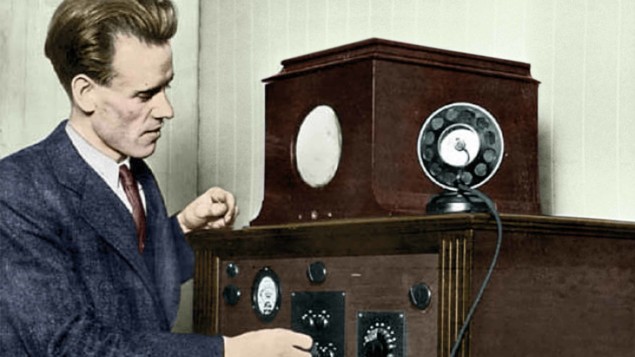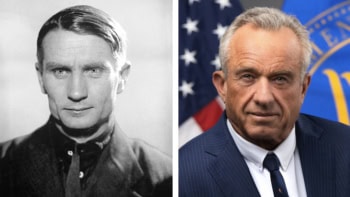James McKenzie reflects on the importance of intellectual property, which is a key part of commercializing technology

You may or may not have been aware, but 26 April was World Intellectual Property Day. Observed annually, the event was set up by the World Intellectual Property Organization to “raise awareness of how patents, copyright, trademarks and designs impact on daily life” and “to celebrate creativity, and the contribution made by creators and innovators to the development of societies across the globe”.
Intellectual property (IP) has played a big part in most of my previous Transactions column, just as it has in most of the businesses I have been involved in. IP – alongside skilled, educated people and “know-how” – is key to ensuring that the efforts put into research and development benefit those who create it.
In my March column, I examined the roles played by Joseph Swan and Thomas Edison in developing lighting technology, and how having a patent early but not acting on it lets others duplicate and surpass your developments to win the commercial race. Last month, meanwhile, I described how both Ted Maiman and Gordon Gould had good claims to have invented the laser. Gould, however, would appear to have had poor advice, because he didn’t patent his idea, incorrectly believing that he needed to demonstrate a working device first.
TV stars
Another great IP battle was over the invention and commercialization of television (TV). The first working TV system was demonstrated by Scottish inventor John Logie Baird on 26 January 1926. However, the first mechanical television system was not terribly practical – in short it was not something you could put in your home. It did, though, demonstrate the potential of the new technology.
The race to develop a practical electronic TV system took place between the US-born inventor Philo Farnsworth and the Radio Corporation of America (RCA). It was a David and Goliath story spanning 15 years and involving patents, lawsuits, schoolteachers, financial might and some less-than-ethical practices. The battle also nearly broke Farnsworth.
Born in Utah in 1906, Farnsworth came up with the concept for the electronic TV as a 14-year-old schoolboy watching the way crops were sown and harvested on his family’s farm – line by line, in what became known as raster scanning. By 1927 he had filed patents on his technology and worked on his invention enough to secure investment. And by the early 1930s Farnsworth had developed working systems and formed a partnership with a radio manufacturer called Philco to bring it to market.
Although it might seem odd why anyone would want to buy a TV at this point as there was nothing to watch, RCA saw the potential. Founded in 1919 as a wholly owned subsidiary of General Electric, RCA was a major manufacturer of radio receivers. It had set up the US national radio broadcasting network (NBC) and owned more than 2000 radio technology patents.
Under the leadership of its general manager David Sarnoff in the 1930s, however, RCA changed its business model. The firm turned its competitors – rival manufacturers who were then making 75% of all radio receivers – into its customers by licensing its own patents to them. RCA could therefore make money both from licensing technology and from the broadcast services that provided the content that fuelled the demand for the hardware.
Sarnoff saw the threat of TV to his radio empire – but also the opportunity it presented. RCA therefore started investing massively in development, hiring Vladimir Zworykin (a talented inventor and engineer from Westinghouse) who had patented an electronic TV concept in 1923. RCA flexed its might via its radio patent-licence agreement and Philco stopped working with Farnsworth. And when Sarnoff tried to buy the patents and Farnsworth refused, RCA used its financial and legal might to try to claim priority of the Zworykin patent.
The legal fight, which began in 1933, dragged on for 15 months with the core of the case being whose patent contained a viable working electronic television system. In the end it was Farnsworth’s high-school science teacher’s testimony and a 1922 sketch that won the case. It was not, though, the end of the story. RCA filed costly appeals to drain Farnsworth’s coffers, hoping to keep the case in court until the patents ran out. The firm also tried to create a workaround for Farnsworth’s patents to make a viable TV, developing a great product that was launched in 1939 at the New York World’s Fair.
The killer blow
Unfortunately for RCA, it used elements of Farnsworth’s design. Despite having tried to work around the Farnsworth patents for years, in 1939 Sarnoff eventually agreed to license Farnsworth’s patents to put the best product on the market. But once America entered the Second World War in 1941, all manufacturing was dedicated to the war effort, which halted production of the TV.
The killer blow for Farnsworth occurred in 1946 when his patents expired. RCA jumped at the fact that anyone could now use his technology, creating the first TV network from its radio network NBC and selling 10 million of its TV sets in the US in just three years. By the end of the 1950s, television had become the world’s most popular form of entertainment.
In all these stories there is a key message to inventors and innovators: get good IP advice early on
James McKenzie
In all these stories there is a key message to inventors and innovators: get good IP advice early on. And if any of this has struck a chord with you, you might be interested in an event at the Daresbury Laboratory in the UK on 22 June, organized by the Business Innovation and Growth Group of the Institute of Physics, which publishes Physics World. Entitled “IP and why you need to know about it”, it should be an invaluable guide especially to those working in small firms, covering details of how the patent system works and how to get patent coverage for your ideas.



